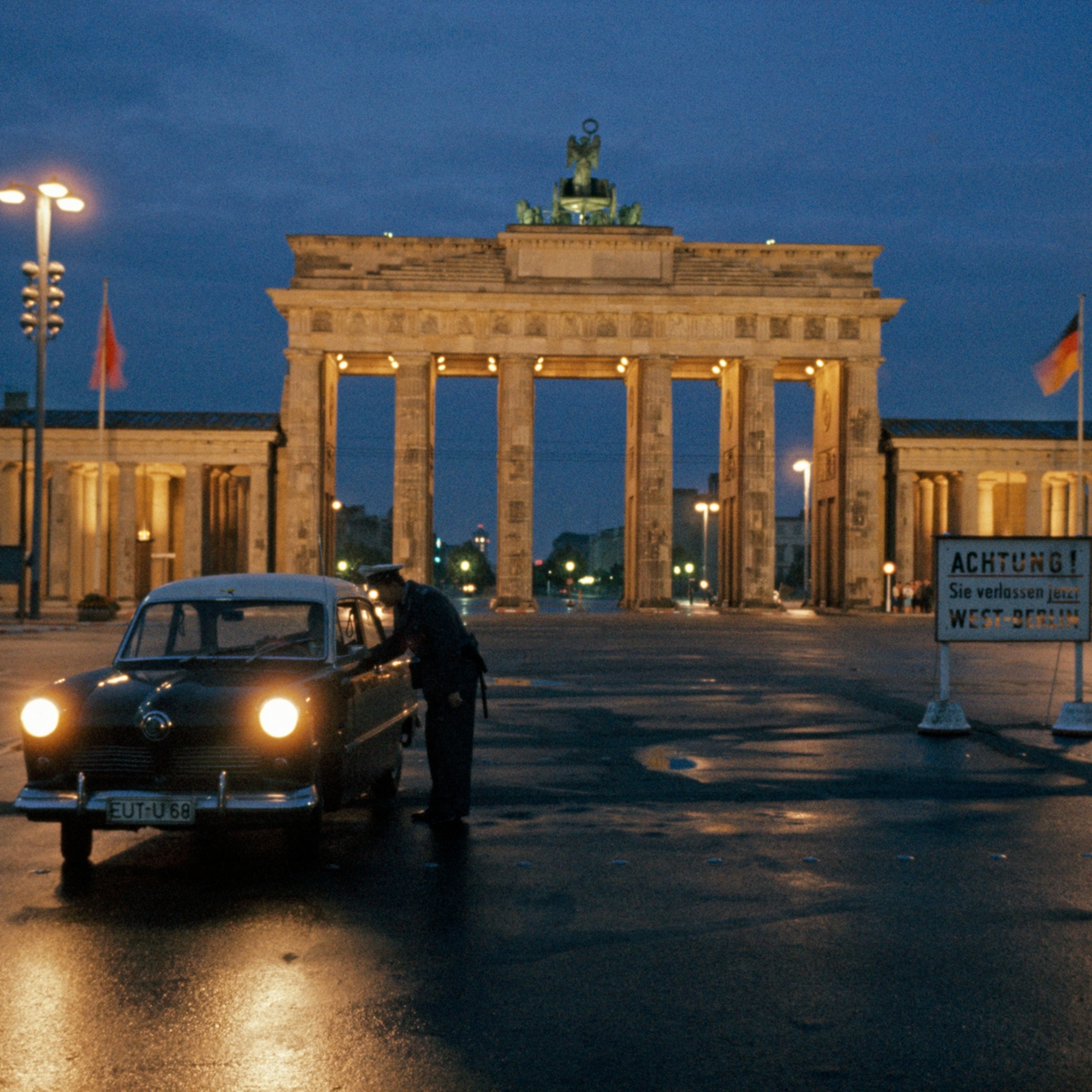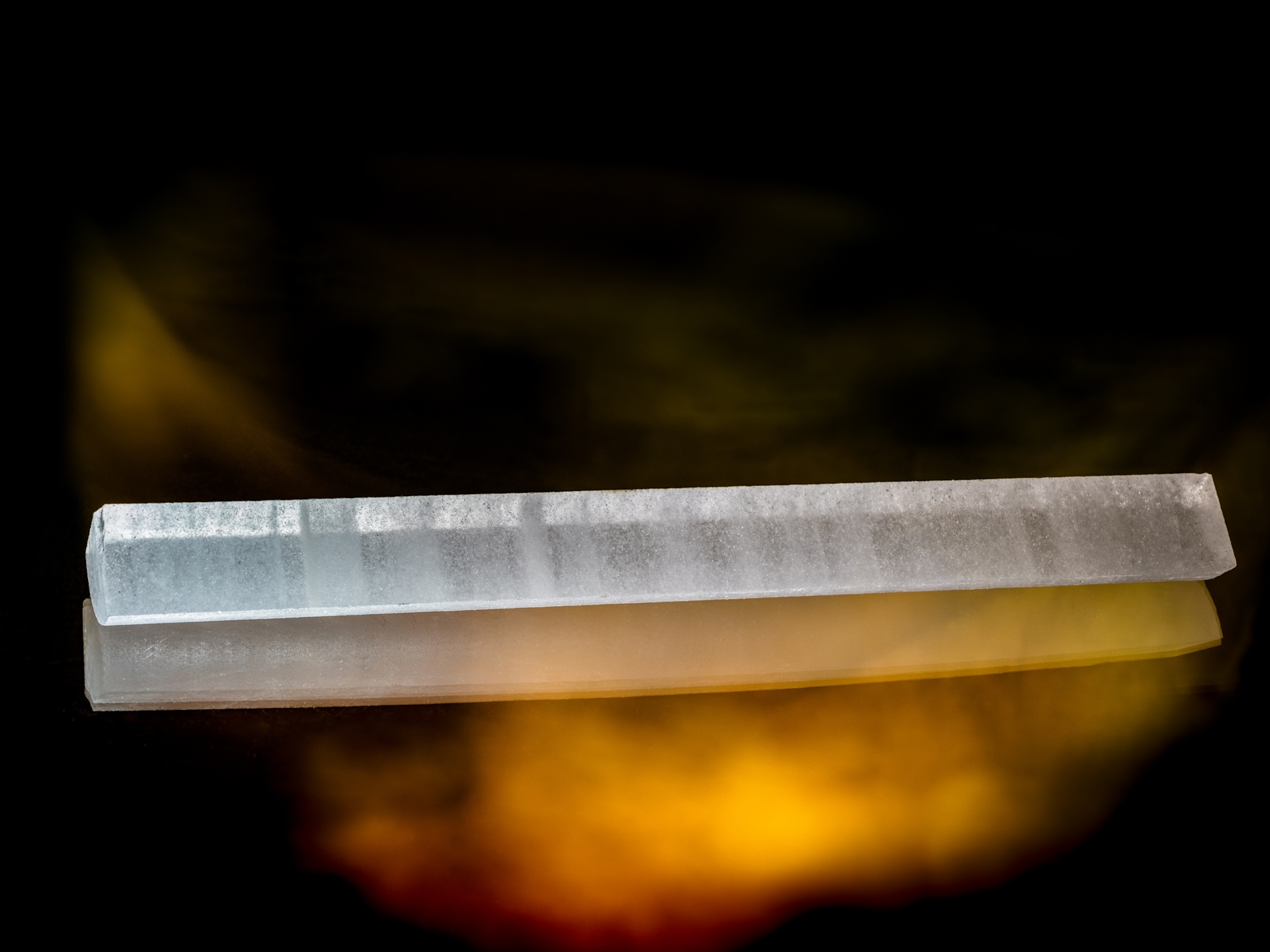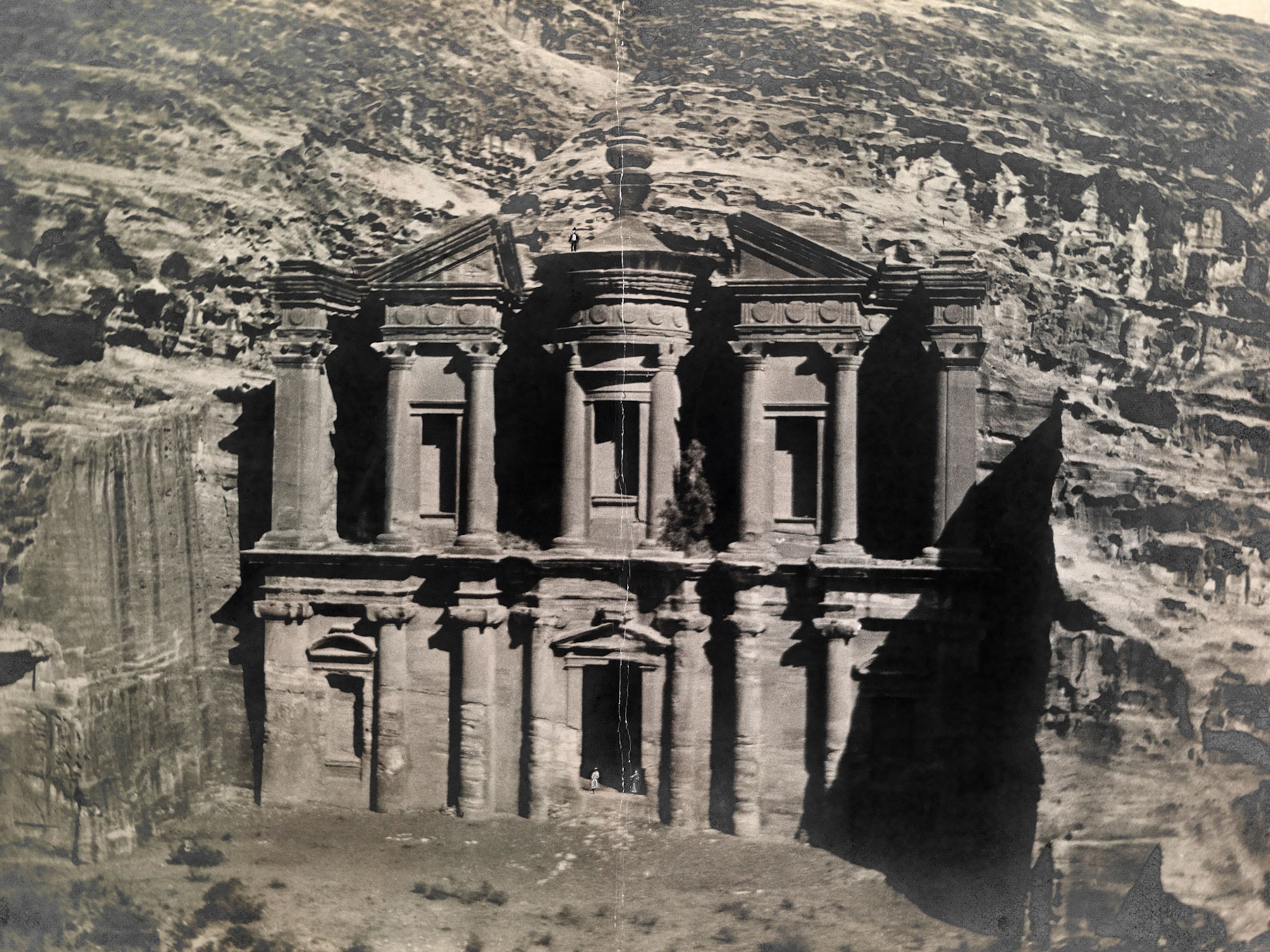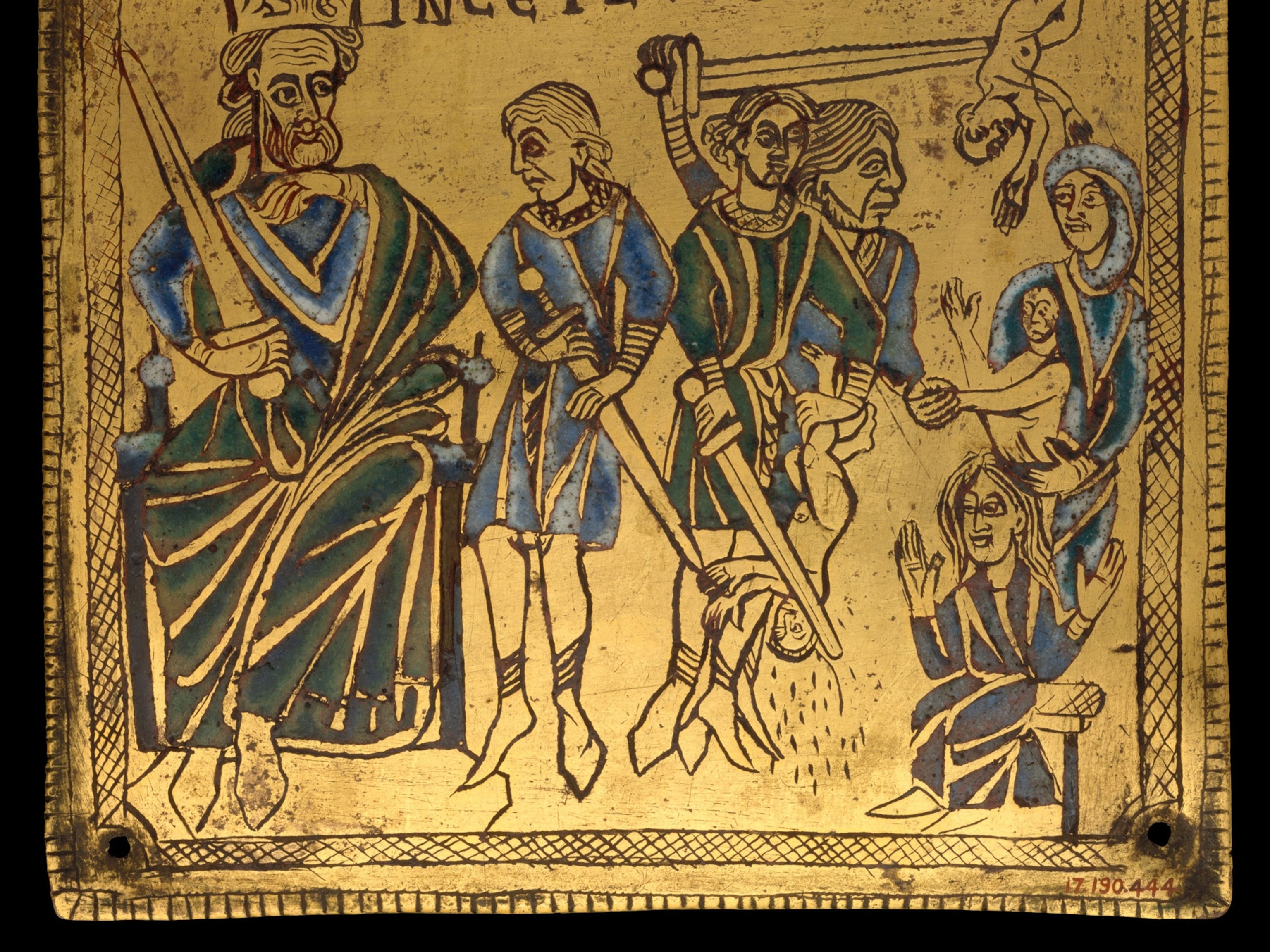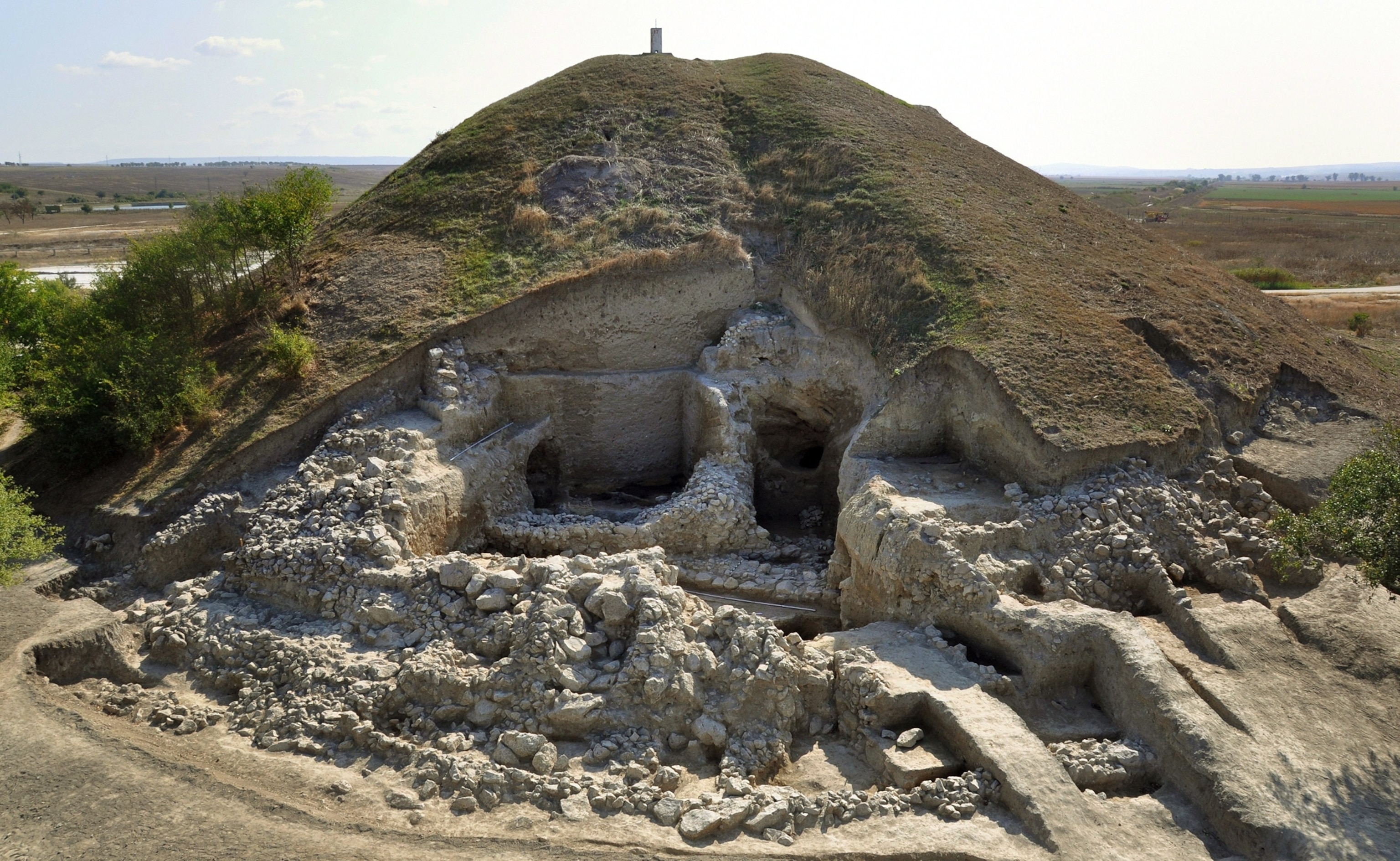
At "Europe's Oldest Town," Unusual Fortifications Hint at Prehistoric Riches
"Unusual" defenses underscore how rich site was. But was it Europe's first town?
It's controversially being called Europe's oldest known town. But whatever Solnitsata's place in history, it's becoming clear that the 6,500-year-old Bulgarian site—not far from the continent's earliest known gold hoard—had something very much worth protecting.
Researchers announced last week they'd discovered 10-foot-tall (3-meter-tall), 6-foot-thick (1.8-meter-thick) stone walls around the settlement. The find is among the evidence for Solnitsata's oldest-town status—and further proof of an advanced Copper Age Balkan trade network, according to dig leader Vasil Nikolov, a Bulgarian archaeologist.
Long before the first wheel rolled through Europe, precious goods were likely crisscrossing the Balkans on pack animals and possibly in carts with sledlike bottoms. Salt, essential for preserving meats, joined gold and copper among the most prized cargo. And with its rare and coveted brine springs, Solnitsata, near present-day Provadiya, was a key producer, boiling off the salt and baking it into ready-to-trade blocks to supply its region with the essential mineral.
Salt wealth might explain those heavy-duty walls, which archaeologist David Anthony called "quite unusual."
"You can find evidence of fortification at many sites of this period, but they tend to be timber palisade walls. [Solnitsata] had a much more substantial, permanent, and unburnable stone wall," said Anthony, of Hartwick College in Oneonta, New York, who did not participate in the excavation.
Trees would have been plentiful in the region at the time, so the decision by Solnitsata's inhabitants to build a wall using stone is revealing, Anthony added.
"It tells you something about the level of hostilities of communities at the time," he said—and about Solnitsata's wealth.
(See National Geographic magazine pictures: "Bulgaria's Gold Rush.")
Europe's Oldest Town?
Pottery remains at Solnitsata have been dated to 4,700 to 4,200 B.C., about a thousand years before the beginning of the Greek civilization. The site's age, its prehistoric population of about 350, and its Copper Age status as an agricultural, military, and ideological center help make Solnitsata the oldest known town in Europe, says Nikolov, whose conclusions appear in a recent paper released by Bulgaria's National Institute of Archaeology (PDF).
But archaeologist John Chapman thinks Solnitsata housed only about 150 people. The idea that it was a town—let alone Europe's oldest town—is, in Chapman's words, "hyperbole."
Solnitsata "isn't really that different from hundreds of other Bulgarian tells [archaeological mounds created by building new structures atop older ones] that I know quite well," said Chapman, of Durham University in the U.K.
"These are not town-sized using any sort of objective criteria at all," added Chapman, who was not involved in Nikolov's study.
Anthony, of Hartwick College, also thinks the oldest-town claim is an exaggeration.
"Heck, when I was a graduate student, I worked on a ... site in what is now Serbia that covered a larger area" and was dated to an earlier time, Anthony said.
For his part, dig leader Nikolov—who could not be reached for comment—seemed to downplay his own claim last week, telling the AFP news service, "We are not talking about a town like the Greek city-states, ancient Rome, or medieval settlements but about what archaeologists agree constituted a town in the fifth millennium B.C."
(Also see "Mystery of Lost Roman City Solved: Ancients Greened the Desert?")
Bulgarian Boomtowns
Town or no town, Solnitsata and its newfound fortifications are evidence that the salt trade helped make southern Europe enormously wealthy during the Copper Age, Nikolov writes.
It's an idea borne out by other recent excavations in southern Europe, which suggest the region was a kind of technological and social proving ground at the time.
The area saw not only the independent invention of copper metallurgy but the world's first social hierarchies and the division of people into rich and poor, ruler and ruled. Evidence for that can be seen about 22 miles (35 kilometers) from Solnitsata, at 300 graves uncovered 40 years ago near the site called Varna. Dating to roughly the same time period as Solnitsata, Varna's cemetery harbors the world's earliest known major gold hoard, but its uneven distribution divides haves from have-nots.
(Related pictures: "'Emergency' Gold Treasures Found in Holy Land.")
Gold Links?
Those two great signifiers of Copper Age Balkan wealth—Solnitsata's walls and Varna's gold—might be connected, Nikolov says.
It's possible, for example, Anthony said, that wealthy individuals from Solnitsata were buried at Varna. But to establish that link would require more tests of pottery found at both sites.
Even then, the findings could be inconclusive. "This [style of] pottery was in use for a thousand years," Chapman said. "So just because the pots look the same doesn't mean they're from the same time period."
One thing's for sure, Anthony said: "By the time you get to this era, there is this really dense, multilayered circulation of long distance trade goods.
"If you look around at the rest of the world, it's hard to identify any place in the world at that early an age that was engaged in such a complex set of trade and interaction."

